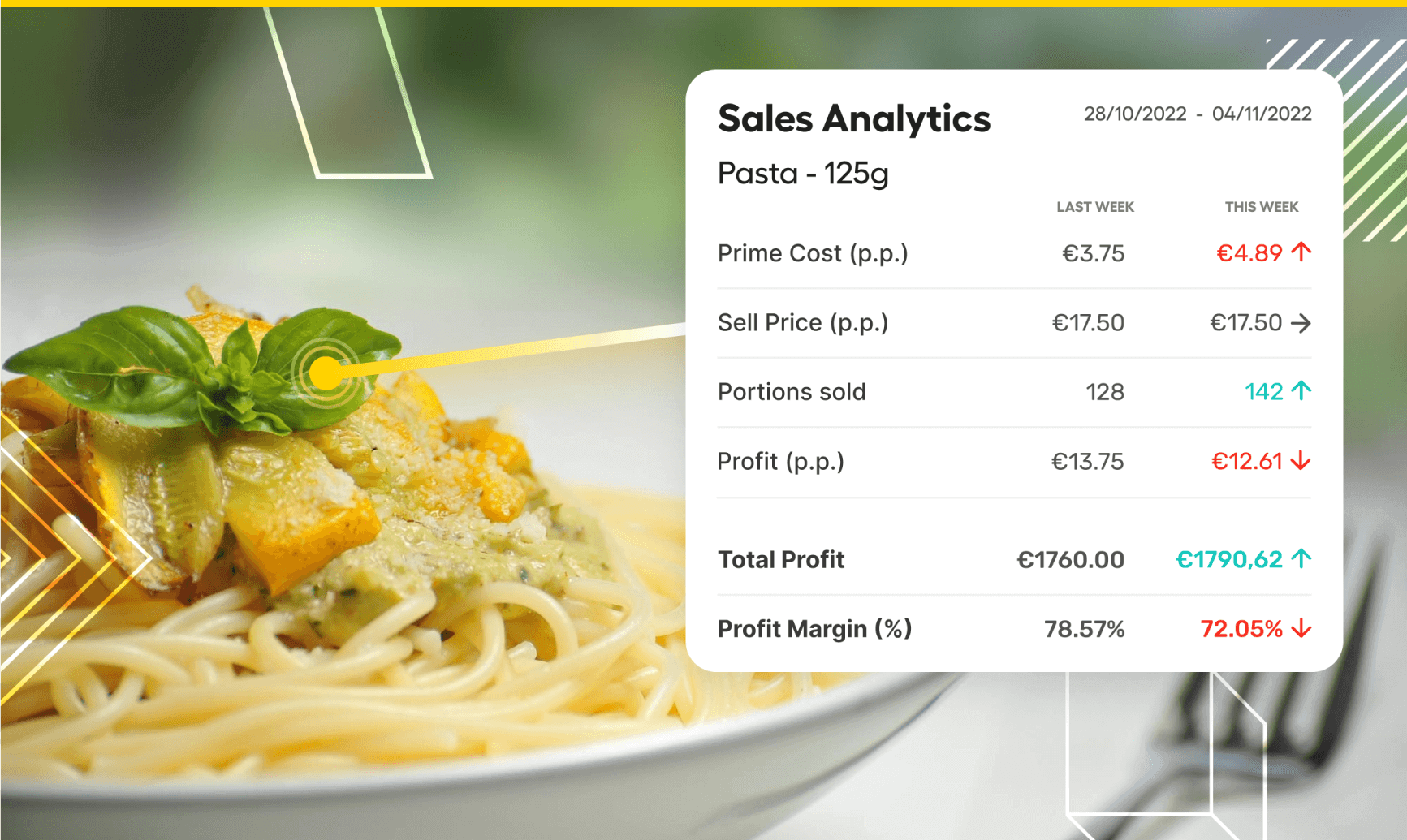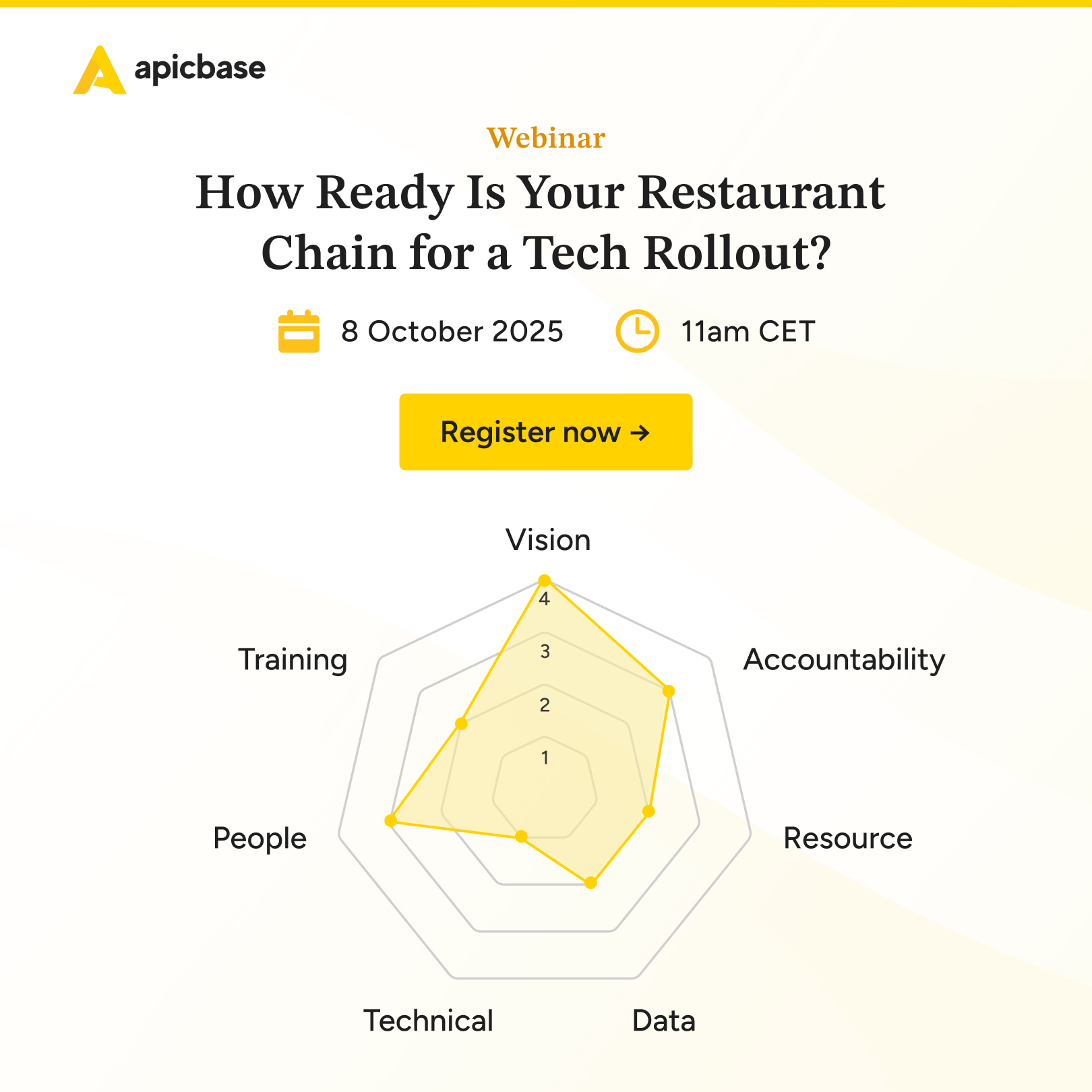If CoGs and overheads rise due to inflation, your menu prices should follow. It’s as simple as that. Otherwise, your margins shrink, and your working capital disappears. Or worse, you’ll make a loss.
But before adding a flat 5% to each menu item, use these tactics.
They will help you reduce your costs structurally. That way, you can keep price increases minimal.
In normal circumstances, when menu prices have to be adjusted, it is usually done strategically and with great caution. Drastic price hikes are the last resort for restaurants. If you’re not careful, you risk scaring customers away and pricing yourself out of the market.
But these aren’t normal circumstances.
In the EU and the UK, inflation rose by around 10% on average over the last 12 months, with outliers such as Estonia, where prices of goods and services rose by 25%. These aren’t percentages you can simply pass on to customers.
In this article, we explore five ways to keep the back-of-house expenses of your restaurants structurally low, so that you don’t have to implement overly heavy price increases to bolster your bottom line.
By keeping CoGs and overhead costs low, you will sharpen your competitive edge. If you apply the techniques in this article also in better economic times, you will not only be better protected against price changes but also continuously deepen your bottom line.
5 Ways To Secure Your Restaurant’s Bottom line In An Uncertain Economy
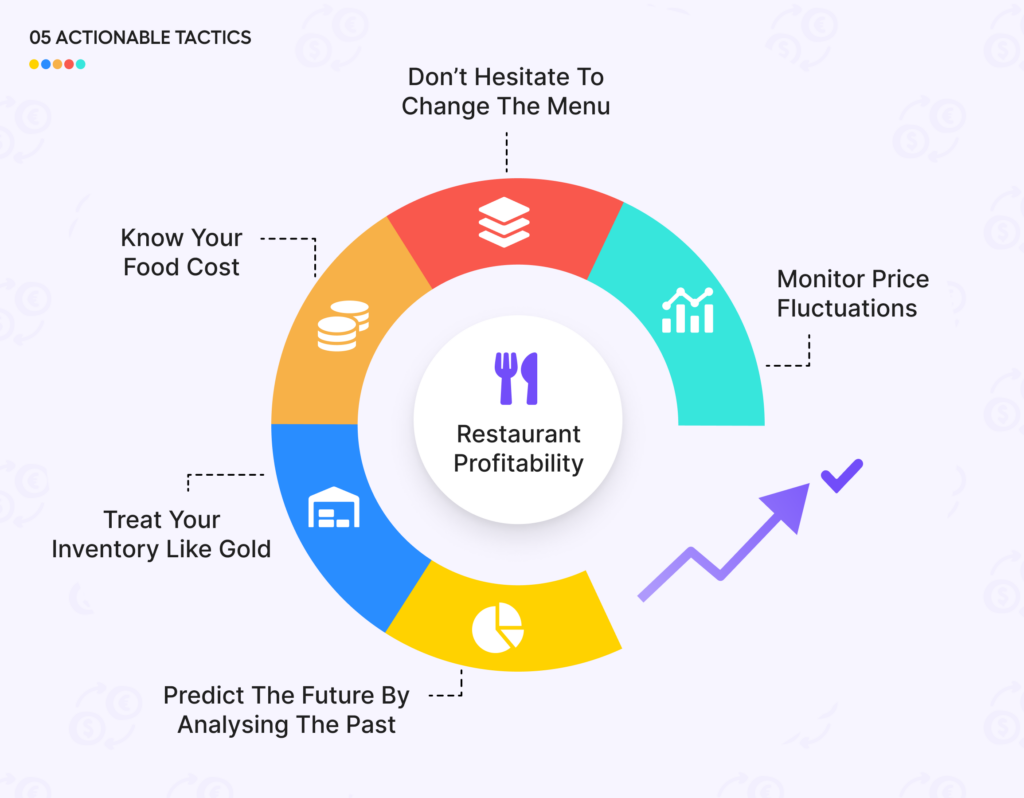
1. Predict the future by analysing the past
Smart forecasts are crucial in keeping costs down. It affects how much stock you order and how much staff you schedule.
Overordering is the main cause of food waste and, sadly, it encourages theft by staff (who’s going to notice?). Without a dedicated F&B inventory restaurant system it can take weeks, if not longer before discrepancies start to surface. All that time, avoidable costs can accumulate unnoticed. If you’ve scheduled more staff than necessary, your labour costs go up. And there are no sales to justify that spend. On the flip side, understaffing and under-ordering can lead to disgruntled customers.
Forecasting will help you to strike the right balance. Luckily, you don’t need a crystal ball to predict next month’s sales. You have something far more reliable.
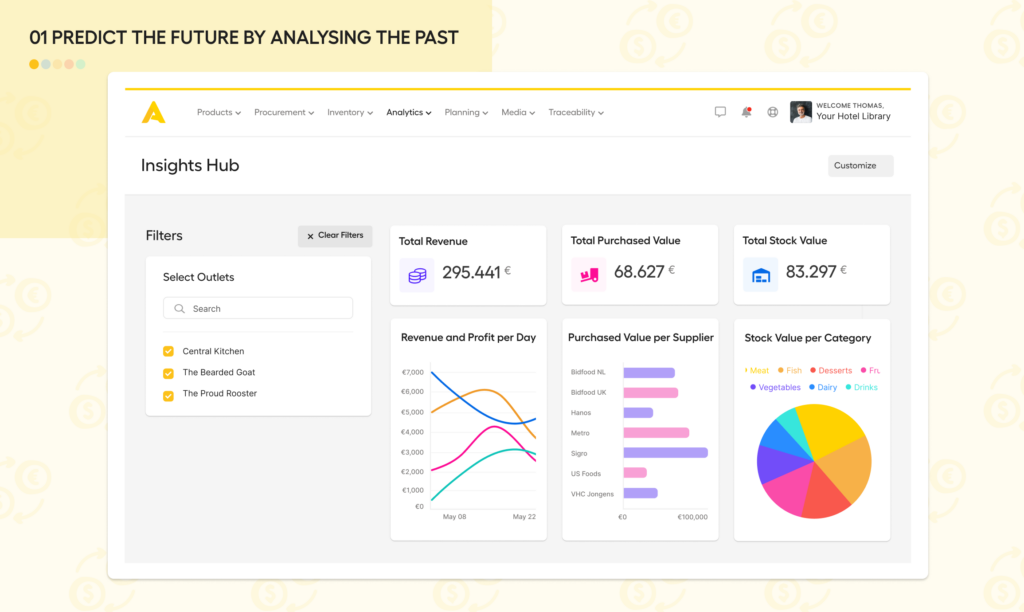
Your restaurants generate measurable data that you can analyse to forecast the future. [You can do this manually or automate the process using restaurant analytics software]. The data points paint a picture of what’s to come and help you anticipate.
- Start by monitoring your daily, weekly, and monthly sales. You can track net and gross sales as well as sales by categories. You can track your stock usage and compare it to your product mix.
- Use these data to identify sales trends. What have been the average daily sales for the past week or past month? By you can extract historical data, you can identify seasonal sales trends.
- Forecast future sales based on these trends. Sales forecasts will help guide your hiring decisions and inventory ordering.
Restaurant management software will help you track sales and automatically calculate trends. It will calculate the amount of inventory you need to support the forecasted demand. It will even automate ordering so that you always have enough supplies when you need them.
Recommended reading: The Apicbase Modules Explained | Why They Are The Backbone Of Multi-Site Restaurants
2. Treat your inventory like gold
Just like banks have vaults, restaurants have stock rooms, fridges and freezers.
You have to treat your inventory like gold. It’s already paid for, and if it is not converted into a sold dish, it’s money down the drain.
Count your stocks regularly and observe good restaurant inventory practices. Teach your staff to strictly follow the FIFO (first in, first out) principle. Keep your pantry organized, so items are accessible and visible. Help your staff understand the inventory’s value and why it should be monitored and guarded at all costs.
Even though these suggestions are obvious to the experienced food service professional, they are often forgotten in practice. Companies with good processes and systems for keeping track of F&B inventories have an easier time when pressures increase due to inflation.
When you keep track of your inventory, you’re able to:
- Identify fast and slow-moving items. You can order fewer of the slow movers or rethink your menu so you can drop them. You can focus your efforts on monitoring essential items and ensuring they never run out.
- Help your employees to create better purchase orders.
- Reduce food waste by identifying near-expiry items and using them before they go bad.
- Catch any signs of pilferage before matters go worse.
- Calculate your actual food costs so you can take measures to adjust as necessary.
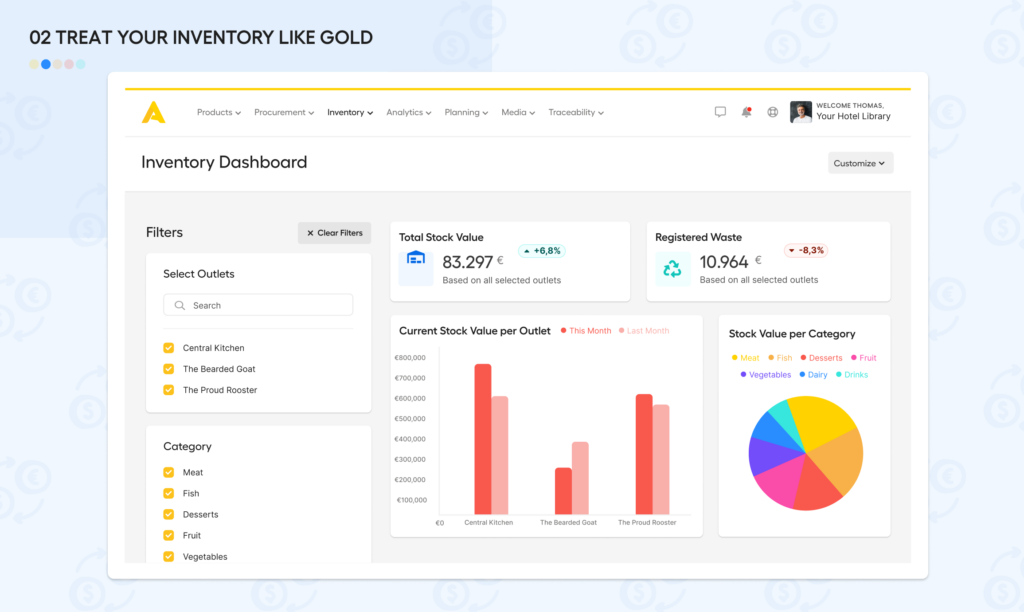
An inventory management software like Apicbase automates stock counting. It will help you prevent errors and increase accuracy. It tracks stock in real-time and automatically reduces stock levels with every order that comes in through your POS. Apicbase also offers barcode scanning to make manual stock counts quick and error-free.
3. Know your food cost
Food cost is obviously a big expense for a restaurant and therefore weighs heavily on your profitability.
You can’t simply scrap that cost either, but there are ways to keep food costs sharp without compromising quality.
The important thing here is to know exactly what your food cost is, and how the money is spent. In other words, you need to be able to monitor F&B spending. Otherwise, you will never know whether your interventions had any effect.
For starters, you should regularly monitor and track your costs per portion. How much does one dish cost to make? You can’t guess. If you don’t know the exact price you pay, chances are you are undercharging. Given the rising cost of raw materials, this is not a far-fetched idea.
Are you absolutely sure every item on your menu is hitting its target profit margin?
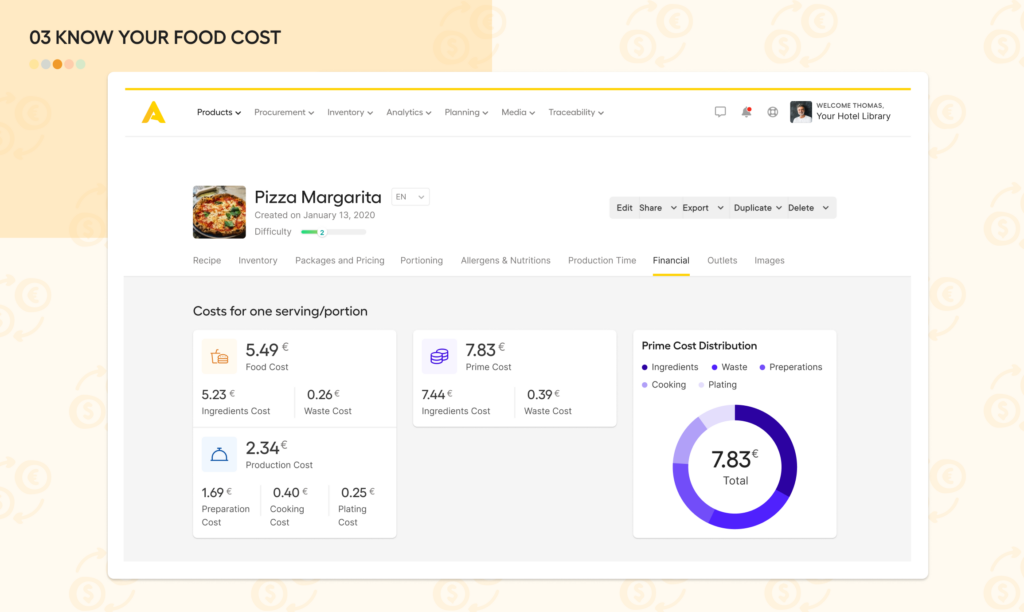
Food costing software is designed to help you make sense of the numbers. It points out when dishes are no longer making money, and it tells you what will happen to the contributing margin if you change the recipe.
4. Don’t hesitate to change the menu
Sometimes, the best way to protect your margins is to make changes to your menu.
Do you have a best-selling dish that’s not making money? You should retire it for now or think of creative ways to add upsells that make it profitable again. What if a recipe calls for an ingredient whose price has skyrocketed? Then you should find a substitute.
Re-engineering your menu and discovering your product mixes can help you push for higher-margin products. You can also find non-performing dishes and eliminate them to reduce the risks of food spoilage.
Lastly, having a focused but high-performing menu helps increase customer turnover. They’ll order faster and finish earlier, allowing you to serve more customers.
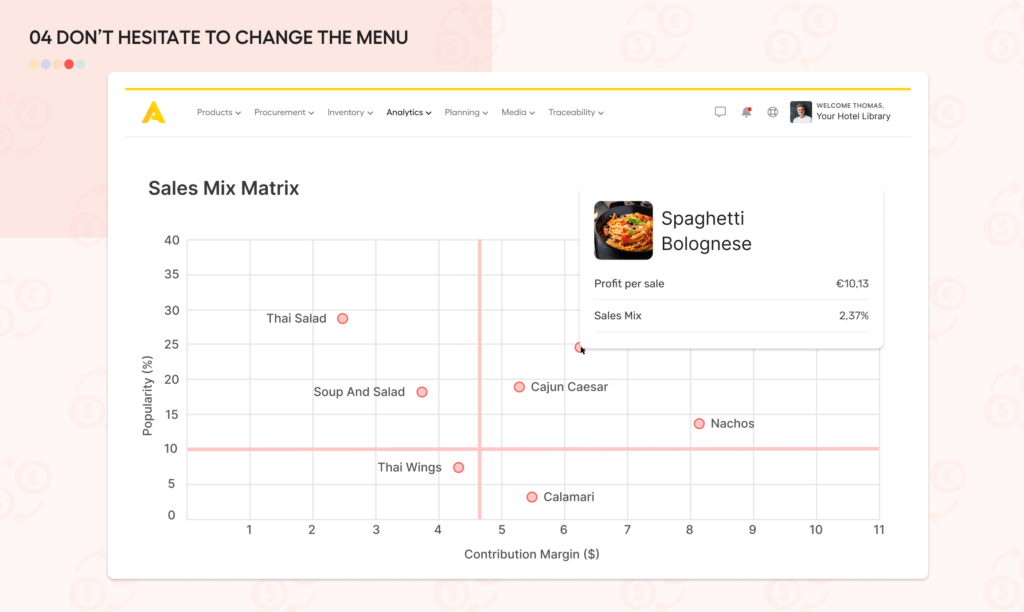
To help you make the right decisions, consider Apicbase’s menu engineering software.
5. Monitor price fluctuations
Amid supply chain problems, rising inflation and global uncertainties, one more thing will help keep your margins up: keep your finger on the pulse.
So talk to your suppliers and build strong relationships. Demand transparency on pricing. Constantly track your purchases to spot changes. In fact, make the whole procurement process easy and bulletproof.
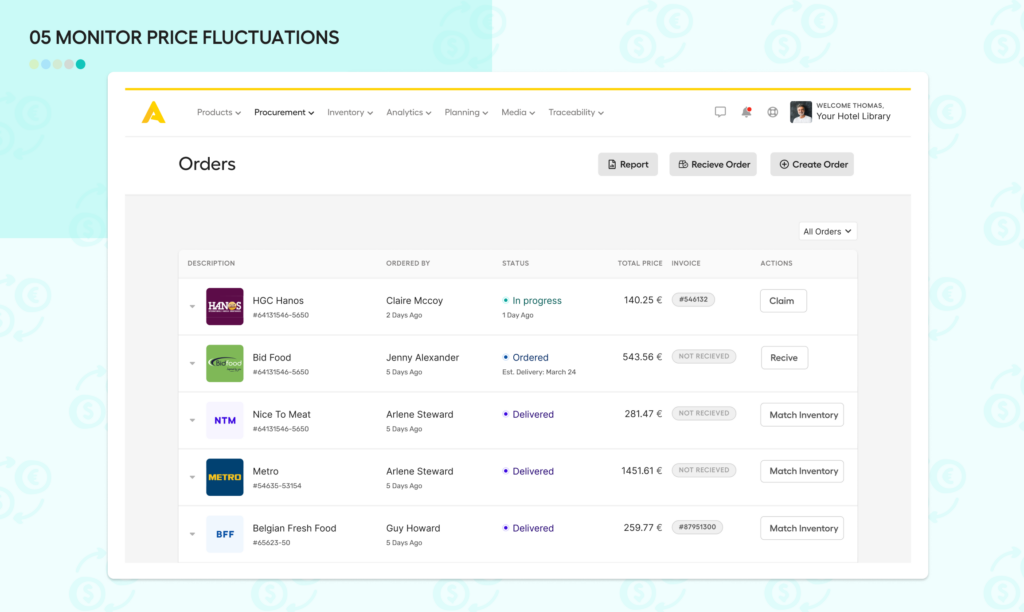
When you’re on top of market prices, you won’t be caught off guard when your menu star suddenly drops to plowhorse status. You can adjust your menu to anticipate these sudden shifts. You can make strategic purchases to lock in preferred prices. You’d be better positioned to preserve your margins and won’t be at the mercy of changing prices.
Remain Competitive Despite Inflation
The pillars of operational excellence haven’t changed now that the economy is out of wack. Solid processes (to prevent mistakes), smart systems (to stay in control) and first-class partners you can trust – are still fundamental for food service operations.
These pillars drive growth, profitability and employee satisfaction but are also necessary to weather the difficult times of high inflation.
When costs and food waste are under control, there is less need to abruptly adjust menu prices, enabling a strategic approach to improve your bottom line.
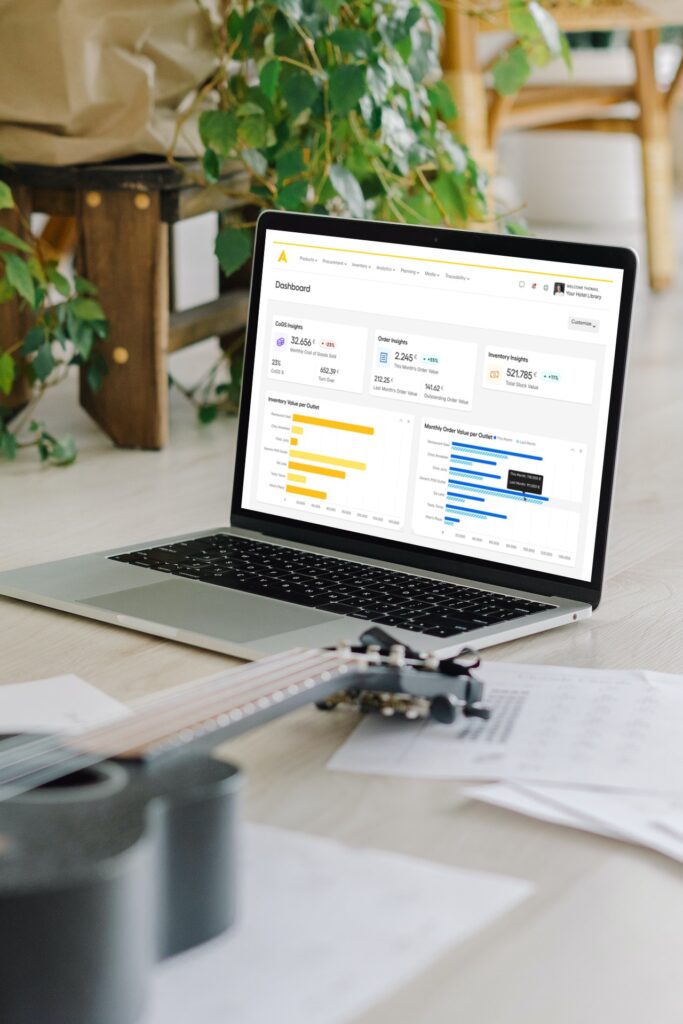
See Apicbase In Action
Reinforce your back of house with a digital backbone.
Apicbase is the leading F&B management platform for multi-site restaurants, dark kitchens and large-scale catering in Europe and the UK.

